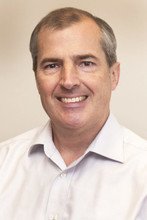Honors and Awards
2022 Optica (formerly OSA) Fellow for technical innovations in emerging optoelectronic devices, particularly those involving group-IV and 2D-material-based photodetectors and optical modulators
2017 IEEE Fellow for contributions to group-IV electronic and photonic devices
2009 Keynote Speaker at 4th International Microsystems, Packaging, Assembly and Circuits Technology Conference (IMPACT 2009)
2006-2009 Device Research Conference Technical Program Committee, 2009 Conference General Chair
Served on numerous conference organizing/technical program committees
10 IBM Patent Plateau Awards
Selected Publications
L. Jin and S. J. Koester, “High-performance dual-gated single-layer WS2 MOSFETs with Bi contacts,” IEEE Elect. Dev. Lett. 43, 639-642 (2022).
J. Wen, V. R. S. K. Chaganti, T. K. Truttmann, F. Liu, B. Jalan, and S. J. Koester, “SrSnO3 metal-semiconductor field-effect transistor with GHz operation,” IEEE Elect. Dev. Lett. 42, 74-77 (2021).
J. Hu, G. Stecklein, D. A. Deen, Q. Su, P. A. Crowell, and S. J. Koester, “Scaling of the nonlocal spin and baseline resistances in graphene lateral spin valves,” IEEE Trans. Elect. Dev. 66, 5003-5010 (2019).
R. Ma, H. Zhang, Y. Yoo, Z. P. Degregorio, L. Jin, P. Golani, J. G. Azadani, T. Low, J. E. Johns, L. A. Bendersky, A. V. Davydov, and S. J. Koester, “MoTe2 lateral homo-junction field-effect transistors fabricated using flux-controlled phase engineering,” ACS Nano 13, 8035-8046 (2019).
A. Barik, Y. Zhang, R. Grassi, B. P. Nadappuram, J. B. Edel, T. Low, S. J. Koester, and S.-H. Oh, “Graphene-edge dielectrophoretic tweezers for trapping of biomolecules,” Nat. Commun. 8, 1867 (2017).
Y. Zhang, R. Ma, X. Zhen, Y. C. Kudva, P. Bühlmann, and S. J. Koester, “Capacitive sensing of glucose in electrolytes using graphene quantum capacitance varactors,” ACS Appl. Mater. Interfaces 9, 38863-38869 (2017).
C. U. Kshirsagar, W. Xu, Y. Su, M. C. Robbins, C. H. Kim, and S. J. Koester, "Dynamic memory cells using MoS2 field-effect transistors demonstrating femtoampere leakage currents,” ACS Nano 10, 8457-8464 (2016).
J. Kim, A. Paul, P. A. Crowell, S. J. Koester, S. S. Sapatnekar, J.-P. Wang, and C. H. Kim, “Spin based computing: device concepts, current status, and a case study on a high performance microprocessor,” Proc. IEEE 103, 106-130 (2015).
N. Haratipour, M. C. Robbins, and S. J. Koester, “Black phosphorus p-MOSFETs with 7-nm HfO2 gate dielectric and low contact resistance,” IEEE Elect. Dev. Lett. 36, 411-413 (2015).
N. Youngblood, C. Chen, S. J. Koester, and M. Li, “Waveguide-integrated black phosphorus photodetector with high responsivity and low dark current,” Nature Photon. 9, 247-252 (2015).
D. A. Deen, E. J Olson, M. A. Ebrish, and S. J. Koester, “Graphene-based quantum capacitance wireless vapor sensors,” IEEE Sensors Journ. 14, 1459-1466 (2014).
S. J. Koester and M. Li, “High-speed waveguide-coupled graphene-on-graphene optical modulators,” Appl. Phys. Lett. 100, 171107 (2012).
Google Scholar Page
